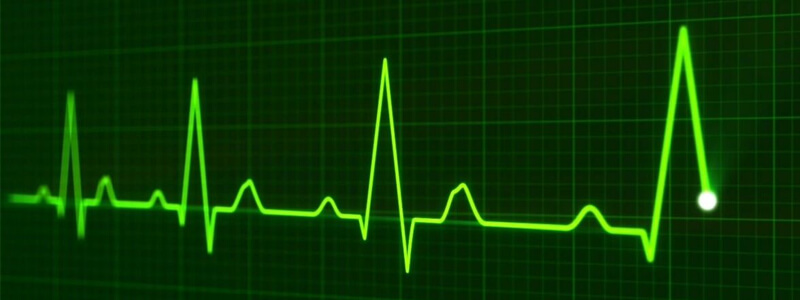A 35-year-old man presents having had 3 recent syncopal episodes. His most recent episode occurred a few hours prior to his presentation and was witnessed by his wife. It occurred whilst they were walking their dog in a nearby park. He had been suffering with a mild coryzal illness over the past few days, and felt hot and sweaty prior to the syncopal episode. She describes him as having suddenly dropped to the floor and states that he lost consciousness for several minutes before coming around. He did not bite his tongue, was not incontinent and had no seizure-like activity. He suffered no chest pain, shortness of breath or palpitations prior to the collapse. He has no past medical history of note but he reports that his father died suddenly and unexpectedly at the age of 36. His observations on arrival are: Temperature 38.5 degrees celsius, HR 85, BP 120/86, RR 16, SaO2 99% on air. His clinical examination was unremarkable.
You perform an ECG, which is shown below:
1. What is the diagnosis in this case?
Show Answer
This patient has Brugada syndome. Brugada syndrome is a group of inherited disorders that affect either the ion channels within the cell membranes of cardiac myocytes. Over 60 different gene mutations are currently recognized. The commonest gene mutation is one in the SCN5A gene, which affects the sodium channel, reducing the flow of sodium ions into the cells. Although more than 50% of these mutations are spontaneous, familial cases with an autosomal dominant pattern of inheritance do exist.
Although there are 3 types of Brugada syndrome, type 1 is the only type that can be convincingly recognized on ECG. It is characterized by coved ST segment elevation > 2mm in leads V1-V3 followed by a negative T wave. This is often referred to as the ‘Brugada sign’.
The Brugada sign:
In order to make a diagnosis of Brugada syndrome these ECG changes must be associated with a set of clinical criteria that include a documented episode of VF or VT, a family history of premature sudden cardiac death, a history of syncope or nocturnal agonal respiration or inducible VT via programmed electrical stimulation.
Syncope and cardiac arrest are the most common clinical presentation of Brugada syndrome. Some cases are detected on routine ECG, which demonstrates the ‘Brugada sign’. Nightmares, disturbed sleep and ‘night thrashing’ are also recognized features of the disease. Fever is recognized to both unmask the ECG changes, which can be transient, and also to trigger the clinical manifestations of the disease. In 20% of cases atrial fibrillation occurs as an associated arrhythmia.
2. What is the most likely ethnic origin of this patient?
Show Answer
Brugada syndrome occurs in patients from all ethnic backgrounds. It is however most common in Asian populations, especially in Japan and South East Asia. It is also much 8-10 times more common in men than women. It is postulated that this is due to higher testosterone levels affecting the condition.
3. How should this patient be managed?
Show Answer
Brugada syndrome causes polymorphic ventricular tachycardia, which can degenerate into ventricular fibrillation. There is a significant risk of sudden cardiac death and patients suffering with it have a mean life expectancy of around 40 years. He should ultimately be managed with the insertion of an implantable cardioverter-defibrillator (ICD).
Certain drugs are recognized as precipitants for the clinical manifestations of Brugada syndrome and the patient should be made aware of these and avoid them if possible. These drugs include flecainide, tricyclic antidepressants, lithium, certain local anaesthetic agents and propofol.
In view of this man’s positive family history genetic testing and family screening would also be appropriate.
The ECGs used in this case were sourced from www.lifeinthefastlane.com







